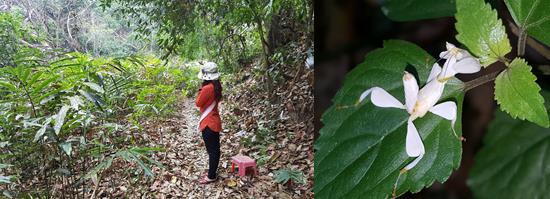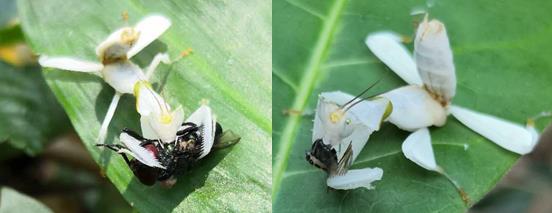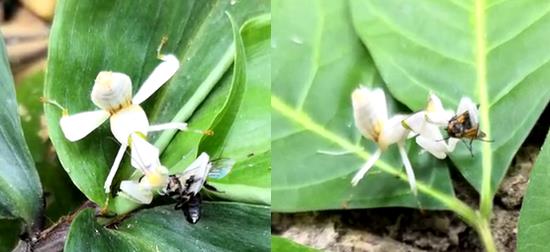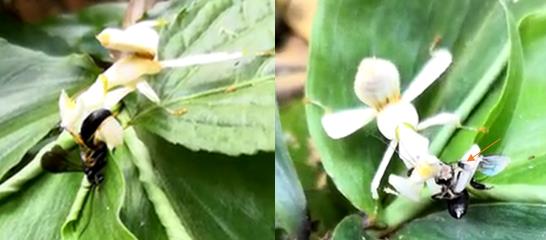
The orchid mantis, Hymenopus coronatus, which inhabits Southeast Asia, possesses a unique flower-like characteristics, which allows the predator to ambush floral visitors as prey. After more than a century of conjecture, O'Hanlon et al. in 2014 provided the first experimental evidence of pollinator deception by the orchid mantis. Hymenopteran pollinators cannot distinguish the color of the orchid mantis from that of some sympatric flowers. Amazingly, H. coronatus emits 3-hydroxyoctanoic acid and 10-hydroxy-(E)-2-decenoic acid mimicking intraspecific communication signals of honeybees.
However, orchid mantis has been observed ambushing on insects including butterflies, crickets, bees, flies and grasshoppers. Therefore, scientists suggest that the predatory strategy of orchid mantis can be interpreted as a form of "generalized food deception". Foraging Pieris rapae butterflies were observed approaching on H. coronatus from a short distance (a). The orchid mantis often pounced, caught, ate up the abdomen of the victim (b) and discarded the wings of the butterfly (c) (Movie S1).
To date, following questions are still open and waiting to be clarified: the role of the mantis' camouflage as a protection shield against predators; the predatory behavior of this mantis species at different life stages; the chemical cues from orchid mantis related to butterflies; the threatened status of the orchid mantis in their natural habitats because of its rarity; the fitness costs for preys ambushed by orchid mantis. To study these points would lead to a much better understanding of this aggressive mimicry.


Local people observed an orchid mantis in its natural habitat & A predatory orchid mantis (Image by KIB)

The same orchid mantis caught different flies (Image by KIB)

Another orchid mantis caught a fly (left) and a megachilid (right) (Image by KIB)

An orchid mantis caught a pompilid (left) and a fly (right; a kleptoparasitic fly is stealing the fly victim from the orchid mantis) (Image by KIB)

86-10-68597521 (day)
86-10-68597289 (night)

52 Sanlihe Rd., Xicheng District,
Beijing, China (100864)

